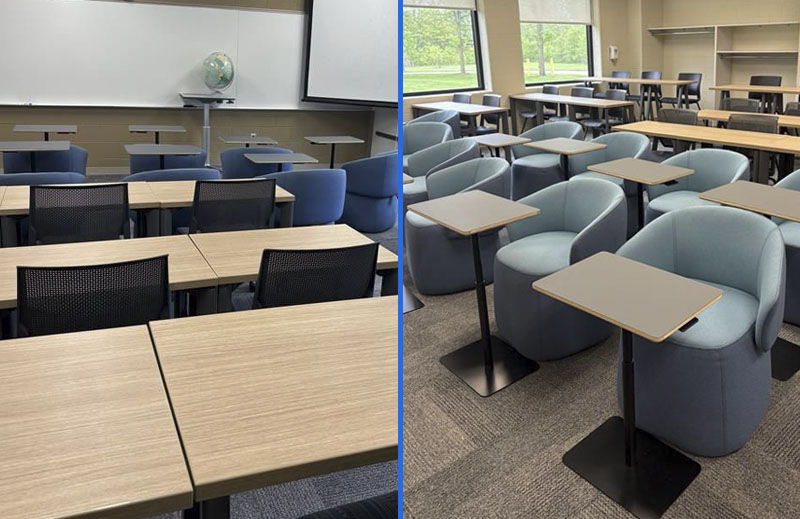Does Furniture Impact Classroom Learning?
Friday, September 05, 2025 12:00 AM

Over the last decade, as online learning has become more common there has been an increase in research on how to make in-person classrooms more comfortable and user-friendly. According to a study published in the journal Frontiers in Psychology, the furniture that students use during class relates to how well they participate, focus and retain information.
For Macomb’s 2025 winter semester, the office of the provost began a pilot program that uses active furniture in classrooms across various disciplines such as math, English, geography, psychology, political science and the dental programs.
Student and faculty feedback was so positive that we plan to continue and expand this trial into more classrooms for the 2025 fall semester.
“The diverse selection of furniture - including regular, tabletop and bar-height seating options, along with soft seating and lounge furniture - has transformed our learning environments in significant ways,” said JT Neuffer, executive director of the Office of the Provost.
What is active furniture?
Active furniture can be seen in a few different ways. In some cases, it is chairs that are more comfortable with armrests and the ability to recline, to better fit a student’s posture.
Comfort is important when learning because when a student is sitting at a desk that is uncomfortable, they could get distracted and focus on adjusting their body and posturing instead of the class lecture.
Other examples of active furniture are chairs that are mobile, with a tabletop. This creates an easier way for students to break out into groups and then regroup. As a result, students become more engaged in classroom discussions and smaller group activities while minimizing the time it takes to transition back to an entire class discussion.
How does active furniture affect teaching?
For some faculty, the new furniture is additional support to their current teaching methods. Social science faculty member Ryan Kostanecki praised the active learning furniture program.
"The standard desks were not accommodating to the active learning activities I teach in my courses," he said. "This program provided a unique opportunity to enhance active learning in my current courses and enabled me to incorporate more dynamic learning activities in the hybrid courses I plan to teach in the fall."
Eric Smith, a student in social psychology and abnormal psychology classes, appreciated the mobility and flexibility of the chairs. "I like the new furniture quite a bit,” Smith said. “Having chairs that can be moved on a swivel with wheels is very helpful and quite comfortable.”
If you would like to learn more about the other resources that are available to our students, visit our Academic Success Center webpage.


